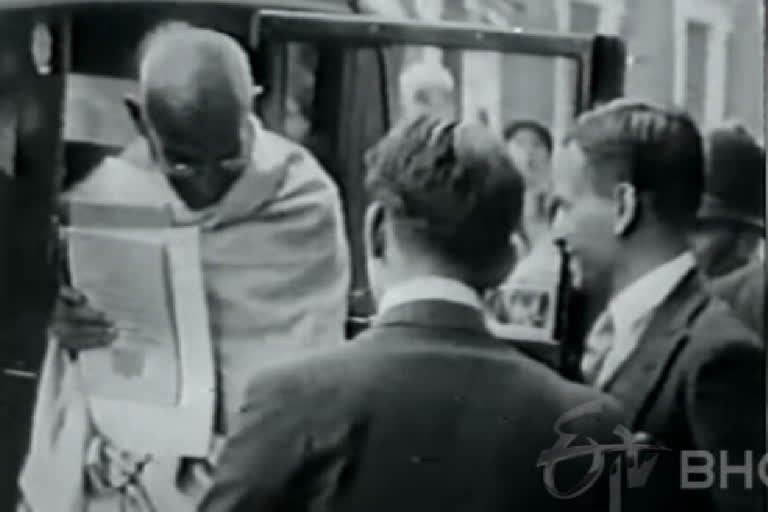Chennai: Mahatma Gandhi was termed half-naked fakir by Britisher Winston Churchill who was overwhelmed by his attire. Gandhi's tryst with loin cloth dates back to September 22, 1921, a century ago when he decided to get rid of his Gujarati attire and adopt simple dhoti and shawl. It was his visit to Madurai that instigated him to adopt a dress code. Khadi Emporium has turned an icon for Gandhi's transformation. He was rattled by the thought of how he could identify himself with the poor if he was looking different from them.
Gandhi had said, “All the alterations I have made in my course of life have been effected by momentous occasions; and they have been made after such a deep deliberation that I have hardly had to regret them. And I did them, as I could not help doing them. Such a radical alteration — in my dress, — I effected in Madurai.”
It was on his train journey from Madras that he indulged in conversation with common people who were bedecked in foreign fineries. When pleaded for Khadi with them, they responded saying "We are too poor to buy Khadi and it is so dear." "I had my vest, cap and full dhoti on. When these uttered only partial truth, the millions of compulsorily naked men, save for their langoti four inches wide and nearly as many feet long, gave through their limbs the naked truth. What effective answer could I give them, if it was not to divest myself of every inch of clothing I decently could and thus to a still greater extent bring myself in line with ill-clad masses? And this I did the very next morning after the Madurai meeting," Gandhi said.
As Gandhi stepped outside on September 22, 1921, he was clad on a simple dhoti and shawl. He stayed in the upstairs portion of a follower’s house (Door No. 251) on West Masi Street in Madurai. He appeared in the new dress code on his way to Ramand and further down to Tirunelveli. The same house is now being occupied by the Khadi Emporium! The place where he made his first public appearance in his loincloth attire is called ‘Gandhi Pottal (open ground). The Statue of Gandhiji in Madurai, where he first appeared in public with loin cloth attire, was installed right across Alankar Theatre on Kamarajar Road.
In an intriguing anecdote, a reluctant invitation was sent to Gandhi for an afternoon tea at Buckingham Palace by King George V and all Indian delegates to the Round Table Conference. Gandhi's poor man dress was against the court etiquette. He stood firm on his stance of not re-clothing even to meet the King. His famous remark “The king had enough on for both of us” was made in this backdrop. He was of the stance that the Indian poor were still half-naked because of Britain. Gandhi's political statement against British exploitation began from Madurai. While images of Gandhi clad in loincloth imprint young minds, the British goods' boycott is earmarked as a major milestone in the Indian Independence struggle.
Also read: Quit India Movement: Walking down the memory lane



